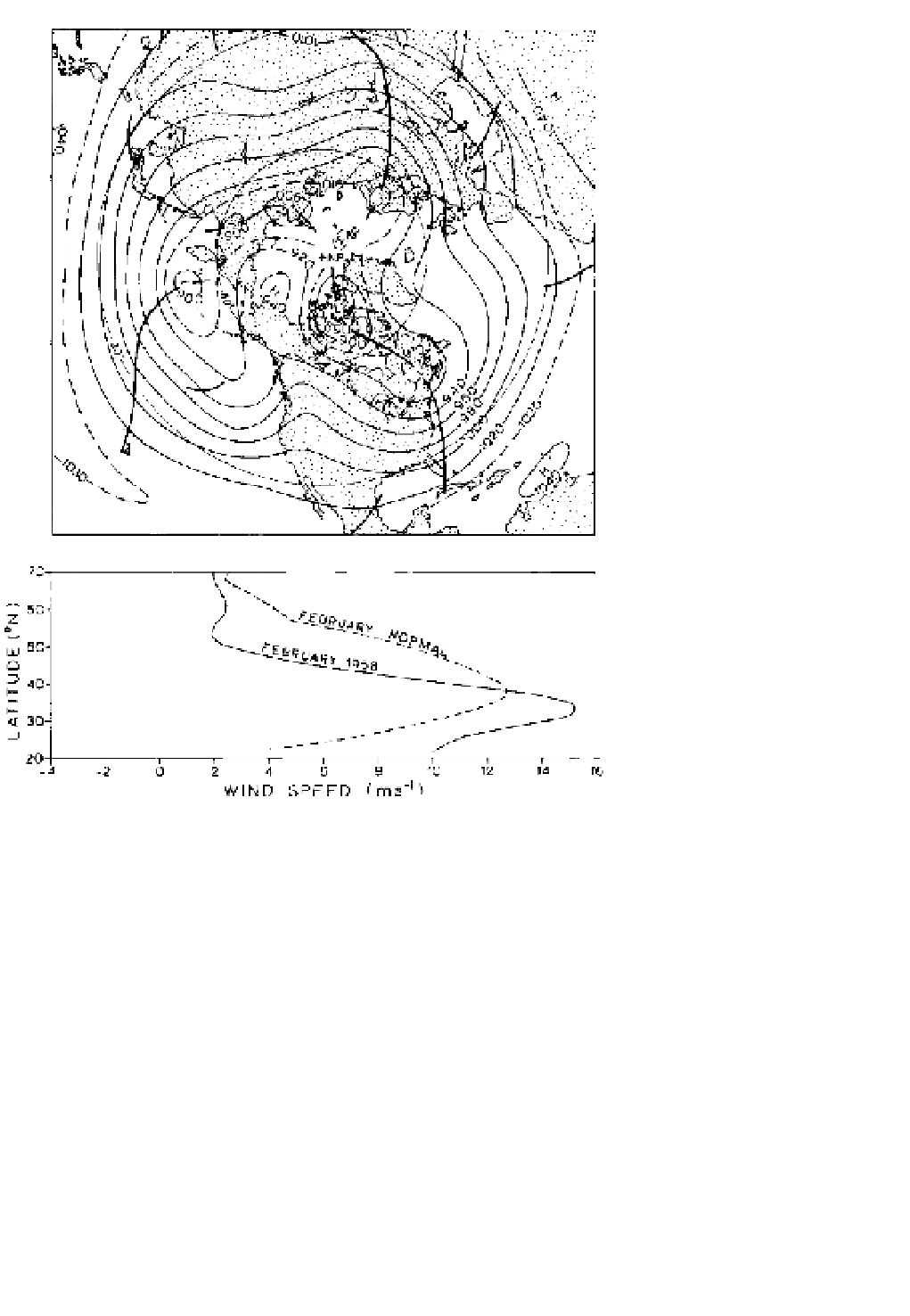Geoscience Reference
In-Depth Information
Figure 7.25
(A) Mean 700-mb contours
(in tens of feet) for February 1958. (B)
Mean 700-mb zonal wind speed profiles
(m s
-1
) in the western hemisphere for
February 1958, compared with those of
a normal February. The westerly winds
were stronger than normal at low lati-
tudes, with a peak at about 33°N.
Source
: After Klein (1958), by permission of
the American Meteorological Society.
A
B
D OCEAN STRUCTURE AND
CIRCULATION
processes is to produce a vertical oceanic layering that
is of great climatic significance:
1
At the ocean surface, winds produce a
thermally
mixed surface layer
averaging a few tens of metres
deep poleward of latitude 60°, 400 m at latitude 40°
and 100 to 200 m at the equator.
The oceans occupy 71 per cent of the earth's surface,
with over 60 per cent of the global ocean area in the
southern hemisphere. Three-quarters of the ocean area
are between 3000 and 6000 m deep, whereas only 11
per cent of the land area exceeds 2000 m altitude.
2
Below the relatively warm mixed layer is the
thermocline
, a layer in which temperature decreases
and density increases (the
pycnocline
) markedly with
depth. The thermocline layer, within which stable
stratification tends to inhibit vertical mixing, acts as
a barrier between the warmer surface water and the
colder deep-layer water. In the open ocean between
latitudes 60° north and south the thermocline layer
extends from depths of about 200 m to a maximum
1 Above the thermocline
a Vertical
The major atmosphere-ocean interactive processes
(Figure 7.26) involve heat exchanges, evaporation,
density changes and wind shear. The effect of these


